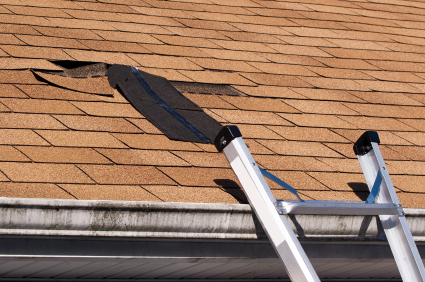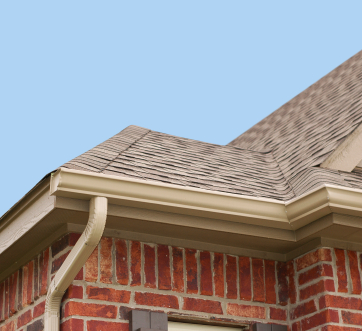Outdoors, mold is typically a good thing. Various molds break down dead foliage and fallen branches of trees and shrubs to return nutrients to the earth for new growth. Mold is not helpful when the tiny reproduction spores float in the air and enter into residences. In homes, particularly damp basements, bathrooms and areas where water has leaked, mold spores attach to wet surfaces and can begin to grow under certain conditions. The growth of mold spores indoors can create allergens, mycotoxins and other annoyances to humans. In some cases of mold spores growth indoors, residents may develop adverse health conditions.
Download the Full Home Mold Remediation DIY Guide Here!!
The United States Environmental Protection Agency has a comprehensive source of information about household mold, how to clean it up and prevent growth. The EPA offers good insight on when it is possible for a homeowner to take on a DIY mold removal project, and when to seek professional services to alleviate the problem.
Adverse Health Conditions
As mold spores grow in damp areas of a residence, they spread into areas which residents touch or inhale mold spores. Not everybody is allergic to mold spores, but individuals with allergies to other allergens such as dust and dander or suffer from asthma are usually allergic to mold and are more likely to have an asthma attack after inhaling mold spores. Exposure to mold spores may cause an individual to have symptoms of runny nose, skin dermatitis, red eyes and sneezing immediately or delayed. Mold allergy symptoms are much like the symptoms of hay fever. Sufferers must be tested to pinpoint the irritant a sufferer is actually allergic to before a medicinal course of treatment may be prescribed.
DIY Mold Cleaning Tips
Some mold cleanup chores may be too big for a homeowner to tackle on their own and a professional cleaning service should be contacted. When the moldy area is no bigger than a small throw rug, approximately 36 inches square, cleanup is a simple do-it-yourself job by following a few simple suggestions.
1. Use detergent and water to scrub mold off a hard surface such as concrete, vinyl or finished wood.
2. Dry the cleaned area completely.
3. Do not paint moldy surfaces until thoroughly clean and dry.
4. Wear protective gloves, clothing, goggles and N-95 respirator while cleaning a moldy surface. An N-95 respirator looks like a paper dust mask with a cartridge trap that captures airborne mold spores, keeping them from entering nasal and mouth airways. Protective clothing, gloves and goggles protect skin and eyes from mold spores as well as cleaning solution splashes.
5. Ceiling tiles and carpet are porous and may need disposed when they are covered with mold. Mold spores fill the cavities or the porous material and are nearly impossible to clean thoroughly.
Professional cleaners or restoration specialists should be consulted to clean expensive or heirloom quality items such as oriental rugs or carpeting, antiques, collectibles and upholstered furniture. Specialists in cleaning moldy items are listed in a phone or online directory under fire or water damage, carpet, rug and upholstery cleaners, furniture restoration and mold remediation.
Water Damage
An Ounce of Prevention Is Worth a Pound of Cure
It is not realistic to think mold and mold spores can be stopped from entering our homes, but it is possible to minimize their adverse affects. Keep moisture levels low in a dwelling with the use of an air conditioner for a high moisture area like a basement or a central unit for the whole house. An air conditioner may be a cooling or heating unit, too,providing temperature control for the living environment.
The most common mistake homeowners make is cleaning areas covered in mold, but not correcting the condition which was conducive for mold spores to attach and grow. A leak in plumbing, precipitation resulting in roof or basement leaks create a perfect environment for airborne mold to grow. If a structure problem is not fixed and leakage continues, a cleaned area will spawn more mold growth, continuing the cycle of adverse health conditions.
Prevention of mold growth is best accomplished by keeping water leaks from occurring. The next best prevention step is taking immediate action when a water leak happens,ideally in the first 48 hours of a leak or spillage.
Prevention Steps
Keep foundation grounds sloped away from building.
Decrease indoor humidity with a dehumidifier or cooling/heating air conditioner.
Stoves, ovens, heaters and clothes dryers produce water vapor which increases indoor humidity. These appliances should be vented to the outside of a residence to keep indoor environments healthy.
Use a fan or open a window while showering to release warm air vapors to the outside of the closed bathing area. Exercise this caution in the kitchen, too, while cooking or washing dishes.
Summary
A mold remediation is a job well done when all mold spores are washed away from an area affected by water leakage or excessive dampness. AND the cause of the dampness is fixed. Mold may cause discoloration or mar a finish, but visible mold can be cleansed from a non-porous surface with a solution of detergent and water. After mold has been removed, the cleansed area should not show any significant water damage or new mold growth. In most situations, residents will be able to reoccupy remediated areas and have no recurring health problems.
Download a full homeowners guide to mold remediation here!
Tags: mold, mold remediation, water damage


